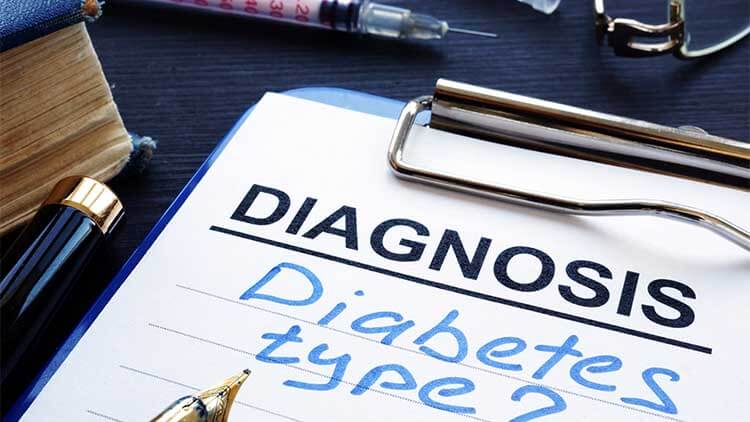
What is Type 2 Diabetes? And is it Possible to Reverse it?
- Introduction
- What is Type 2 Diabetes?
- Can you reverse type 2 diabetes?
- How to reverse Type 2 Diabetes naturally
Introduction
With 8.5% of the world’s population believed to have diabetes, and even more at risk of developing it – a whopping 84 million people (who have prediabetes). It does beg the question: can you reverse Type 2 Diabetes?
Is this article we shall get to the root of what Type 2 Diabetes is, before looking into how long does it take to reverse type 2 diabetes.
What is Type 2 Diabetes?

Diabetes essentially affects the production/use of insulin within your pancreas. Now, given that insulin controls how glucose from carbohydrates is metabolized and turned into energy for fuel (essential for your skeletal muscles and brain), it is important that we learn how to manage it, so that our bodies are not affected.
Type 2 Diabetes differs from the other two types because Type 2 occurs when your body CAN produce insulin (unlike Type 1 which doesn’t produce it correctly and requires injections), BUT it can’t do it effectively/efficiently (due to you being overweight or physically inactive). This means, that unlike the others it can be prevented. In fact, 80% of Type 2 cases of Diabetes can be prevented by simply changing your lifestyle.
Do that and you can avoid developing hyperglycemia and the following symptoms of hunger, fatigue, thirst, increased urination, blurry vision, kidney/nerve damage, and skin, mouth and food infections.
Can you reverse type 2 diabetes?
Whilst there is no cure, it is definitely possible to prevent and – according to studies – reverse Type 2 Diabetes.
By simply making changes to your diet and trying to lose weight – as well as exercising – this can help to eliminate excess fat (which can affect insulin production and how it is used) and enable you to reach, maintain and normalize your blood sugar levels without the need for medication.
During one 2011 study, when 11 people with Type 2 Diabetes reduced their calorie intake for 8 weeks, this helped to reverse their condition.
Now, before you jump the gun, we need to reiterate that this doesn’t mean you’ll be completely cured. Type 2 Diabetes is an ongoing disease, so even if you enter ‘remission’ and no longer need medication, this doesn’t mean these symptoms won’t ever return. Fall back into bad habits – for instance – and you could start experiencing them again.
That being said, by changing your diet to reverse Type 2 Diabetes, you could potentially go years without having to use medication to help control your glucose levels. Perfect!
The Science:
When you develop Type 2 Diabetes, the cells that help your body to manage your blood sugar levels stop working correctly. In the past, doctors believed that these cells shut down forever; however, recent research suggests that it is possible for certain cells to come ‘back to life’.
For instance, when you lose weight this helps to lower the amount of fat in your liver and pancreas. As a result, this loss of fat can help the beta cells in your pancreas (which releases insulin) to start controlling your blood sugar again.
Now, the chances of you ‘rescuing’ these cells is far more likely, the sooner you start to lose weight (after diagnosis). So, instead of managing your symptoms with lifestyle changes and medication, it is recommended that you try to lose weight.
NOTE: you should ALWAYS consult your doctor before you attempt any type of diet to reverse Type 2 Diabetes. They can help you to determine if your dietary plan is enough to come off of your medication.
So what exact steps can be taken to help you reverse Diabetes type 2? Let’s find out…
How to reverse Type 2 Diabetes naturally

Truthfully? There are many tricks you can try to help you reverse Type 2 Diabetes safely. Yet, the most popular ones are the following:
-
-
Changing your diet – eating right can go a long way to helping you manage your blood sugar levels, especially if you bear the following points in mind:
- Maintain a healthy weight – if you’re overweight, losing enough weight to hit the normal BMI range can reduce your risk 7-fold. Going from obese to normal can reduce your risk 20-40 fold.
- Eat wholegrains – foods such as whole wheat bread, brown rice and oatmeal can all offer your body more fiber (which is slower to digest). This prevents big spikes in glucose and reduces the amount of stress placed on insulin production. TIP: by eating 2-3 servings of wholegrains a day, you’re 30% less likely to develop Type 2 Diabetes.
- Avoid/skip sugary drinks – these can all cause spikes in glucose and place a strain on insulin production. So skip having sodas, pre-packed fruit juices, and coffees with syrups in and choose sugar free drinks instead. Just one sugary drink a day can double your chances of developing Diabetes.
- Get fresh and don’t consume processed meats – would you believe that just one serving of bacon a day can double your risk of diabetes? Yet by swapping red and processed meats for nuts, fish and poultry, you can cut it by up to 35%. Crazy, but good to know!
- Reduce your calorie intake – low calorie diets can have a positive impact on Diabetes. In two separate studies, participants were given a liquid diet of 625-850 calories a day over 2-5 months (followed by a less restricted diet aimed at helping them to maintain their weight loss). Following these studies they found that nearly 50% of participants managed to reverse their diabetes whilst managing to keep their glucose levels close to normal (for 6 months to a year). Similarly, most of the group succeeded in losing 30lbs or more. NOTE: this type of dieting is considered ‘extreme’ and should only be done under the supervision of a professional (where they can help you to manage your calorie count). In addition, researchers commented on how those who hadn’t had diabetes for very long, were more successful at reversing Diabetes than those who had had it for a while. This suggests you should begin a weight loss plan as soon as you’re diagnosed as having Type 2 Diabetes.
- Low carb diet – the American Diabetes Association strongly recommends keeping to a low carb eating pattern (although they have not set a standard amount for how many carbs you can have). Usually a low carb diet would be tailored to around 45-60g of carbs per meal and a total of 200g per day (the less you have the better). In fact, some doctors feel the ketogenic diet is the best way to shift excess pounds and stabilize your blood sugars. It works by restricting the amount of carbs you eat to 50g or less per day. In doing so, your body is forced to break down fat for fuel, encouraging greater weight loss and the benefit of stronger glucose control. NOTE: this particular diet can lead to muscle cramps, bad breath and loss of energy. Plus some studies have noted an increase in hepatic insulin resistance which can cause a deficiency in some essential micronutrients.
-
Changing your diet – eating right can go a long way to helping you manage your blood sugar levels, especially if you bear the following points in mind:
You can also:
-
-
- Eat a variety of fresh/frozen fruit and veg every day
- Stick to lean proteins (poultry, fish, low-fat dairy, soy and beans) and healthy fats
- Limit the amount of alcohol you have
- Exercising more – increasing your level of physical activity can definitely improve diabetes YET it cannot be done alone to help you lose weight and reverse Type 2 Diabetes naturally. Only through a combination of healthy dietary changes and exercise e.g. a low calorie diet combined with high intensity training (to increase calorie burn); can you start your path to remission.
-
According to one study, when participants were asked to cut their calorie count by 500-750 calories per day – as well do 10,000 steps a day and a minimum of 2 ½ hours moderate exercise (per week) -– over 50% managed to achieve close to normal blood sugar levels without the assistance of medication. Some even managed to maintain these levels long term.
-
-
- Tip 1: If you don’t normally exercise, start off small by going for a short walk before increasing the length and intensity of your walk over time. Going on a brisk 30 minute walk every day can decrease your risk of Type 2 Diabetes by 30% as it helps to improve your muscles ability to absorb glucose.
- Tip 2: check your blood sugar before, during and after. If you have any concerns, speak to your doctor.
- Tip 3: Keep a snack on you just in case your blood sugar levels drop too low whilst you’re exercising.
- Fasting – this is not a typical treatment for Type 2 Diabetes; however, one small study found that therapeutic fasting (where you go without food and drinks for a set period of time) can help reverse Type 2 Diabetes.
-
By the end, 2 of the 3 participants stopped taking all of their diabetes medication, whilst the third stopping taking 3 of his 4 medications. Similarly, within 1-3 weeks they all stopped taking insulin and lost 10-18% of their body weight.
NOTE: they achieved this by doing three 24-hour fasts every week for 3 months (they would only eat dinner on the days that they fasted), and then lunch and dinner on the days they didn’t fast – keeping to low carb meals.
In a separate study, participants who ate only 500-600 calories a day, twice a week (then a normal diet the rest of the week) lost just as much weight – and managed to lower their blood sugar levels – as those who limited themselves to 1200-1500 calories per day, all week.
ADDITIONAL NOTE: should you choose to fast, it is important that you speak to your doctor first so you know how to safely implement this kind of diet.
-
- Bariatric surgery – there is growing research which suggests that bariatric surgery can reverse Type 2 Diabetes for an extended length of time. You see, this surgery is designed to change your stomach and digestive system by altering their size. In doing so, you can begin to lose weight and see a reduction in appetite.
But this is not all it can do…
Theories suggest it may also affect the hormone in your gut which assists with controlling your blood sugar levels. As a result, up to 75% of diabetic patients have witnessed a reversal in their diabetes.
NOTE: you can only have bariatric surgery if your BMI is 35 or over. Similarly, it works better for patients who have been diabetic for less than 5 years and whom don’t use insulin.
- Dietary supplements – again these can help you to lose weight on their own, but should be combined with better eating habits and exercise to help optimize your weight loss results.
Conclusion
So can you reverse Diabetes Type 2? All signs seem to say yes. By adopting a healthy, low calorie diet; increasing your level of physical activity and ultimately losing weight, you can alleviate symptoms and turn back the clock.
Just remember – none of these are a cure. They are simply steps you can take to ensure Diabetes doesn’t control your life. Similarly, add a proven fat burner such as PhenQ to your diet, and this assistive tool can help you to safely shift those pounds and keep the weight off long term.




